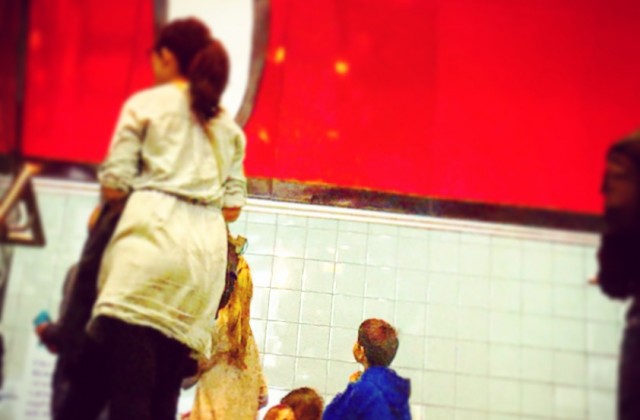Reflections on Opening Day: Light Rail is People
In both transportation and land use it is easy to lose sight of one basic fact: what matters most it isn’t the bricks, the tracks, the design, the routes, the heights but people. At this last weekends opening of the latest link in Sound Transit’s Link Light Rail, there was lots of talk about the public art, the line itself, the future campaign to expand the system, and even lots of quantitative exclamations about the reduction in travel time between previously far-flung sections of the city. But as with density, while mass transit requires lots of capital investment and technical expertise to make it work, in the end, what makes it work is people. I’d suggest that most of our disagreements about where our city goes next is because we miss this point.
I live exactly .18 miles from the new Capitol Hill station but I had no plans to get mixed up in any of the celebrations. After all, it’s a two-minute walk, and once the opening day crowds subsided I’d have the place all to myself more or less. Why go up there and hassle with the hype. Earlier in the morning I ended up having to get coffee at the Starbucks down the street, a kind of last resort when other coffee shops I prefer have long lines. I ended up running into the Mayor. He was there for the opening of the station. We had a pleasant exchange and I went home.
Later that afternoon I was trying to figure out to write here. You might be surprised, but most of the times I struggle to find something to say. Not because I don’t have anything to say, but like most writers on a narrow topic, it’s easy to find oneself writing the same thing over and over. Not necessarily a bad thing—repetition is part of education and debate—but it is exhausting saying over and over again in different ways, “let’s build lots more housing of all types, everywhere, for all levels of income.” And one has to be creative to make the repetition at least interesting.
So I decided to walk up to the station and see what was going on. As soon as I got there I ran into a long time friend who works for Sound Transit. He handed me a media pass and we walked past the lines and around the station. Then we dove into the crowds. I talked with someone from Seattle Subway about Mandatory Inclusionary Zoning. We ran into probably half a dozen people I usually only see on Facebook. It seemed like every milling crowd of people had at least one familiar face—from leading politicians to people I hadn’t seen in years. I’m not being very evocative, but it reminded me what an afternoon in a small town might be like – seeing familiar people in public, catching up with them about their lives if even for just a moment.
My point is an obvious one: light rail is people. I like this phrase because it reminds me of Charlton Heston’s realization in Soylent Green. I said density is people for the same reason. Careers are made in complicating how to build great cities. But it’s simple. Put a lot of people together and there is a spontaneous order* that leads to community, and it is community that makes a city great. Yes, we have to figure out how to pay for things, and align things, and what color things are, and a myriad of other important choices. But we should not let these things stand in the way of doing rather than talking.
I wrote last week about competing visions of our city and how the stories that we tell matter. I won’t recall my experience of the light rail opening as anything but a completely spontaneous connection with other people facilitated by having those people close by, either because they live down the street or because light rail draws them closer. As I have pointed out again, and again, and again, cities—lots of people living in close proximity—create the possibility for transformation and evolution, for innovation and prosperity, and greater compassion for each other.
Cities can save us from the consequences of inefficient use of resources and from callousness toward one another from lack of human connection. We have to believe and imagine that even if that new building makes us look fat, the station is in the wrong place, and our apartments are too expensive, we’re still better off here than anywhere else in the world because we have each other.
*One of the best explanations of our potential through less planning rather than more is from Milton Friedman here:


